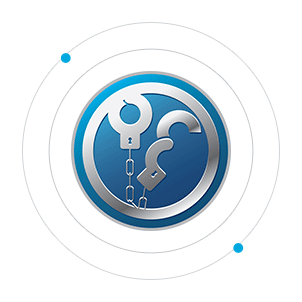How To Detect Malware on iPad: FULL GUIDE (2024)
Ensuring the security of our devices has become extremely important in this digital age. While iPads are generally considered more secure than other devices, they are not immune to malware. Malware, short for malicious software, can infiltrate your iPad without your knowledge, compromising your privacy and security.
In this article, I will explore the various aspects of malware on iPads and signs that your device may be infected. Most importantly, I'll show you how to detect and remove malware from your iPad.
Scam Detectors Most Trusted Websites in Online Security
- Guard.io (100): Surf the web safely. Clean up your browser, remove maliscious extensions and check for privacy violations.
- Incogni.com (100): Delete your personal data from the internet and protect against scams and identity theft.
- ExpressVPN (100) Stay secure and anonymous online - Best VPN Out There
- IPVansish (100) Fast VPN to stay safe and secure online with multiple discount plans.

Learning More About Malware on iPads
To effectively combat malware on iPads, knowing what it is and how it can affect your device is essential. Malware refers to a broad range of malicious software designed to corrupt, steal data, or disrupt the normal operation of your iPad. This can include viruses, worms, Trojan horses, spyware, and adware.
Defining Malware
Malware comes in various forms, each with its unique characteristics and objectives. Viruses attach themselves to legitimate programs and infect other files, spreading throughout your iPad. These viruses can be particularly harmful as they can modify or delete important files, leading to data loss or system instability.
Worms, on the other hand, replicate themselves and spread across networks, consuming network resources and causing disruptions. They can quickly spread from one device to another, making them a significant threat to the security and stability of your iPad. Worms often exploit operating system or software vulnerabilities to gain unauthorized access and control over your device.
Trojan horses disguise themselves as harmless software, tricking users into installing them, only to unleash their malicious payloads later. They can be disguised as legitimate apps or software updates, making it challenging to identify them. Once installed, Trojan horses can perform various malicious activities, such as stealing sensitive information, recording keystrokes, or providing unauthorized access to your iPad.
How Malware Affects Your iPad
Malware can have severe consequences for your iPad. Its impact can range from annoying pop-ups and ads to more sinister actions such as data theft, unauthorized access to your personal information, and even financial losses.
One common way malware affects iPads is by displaying intrusive and unwanted advertisements. Adware, a type of malware, can inject ads into websites, apps, and even the device's lock screen. These ads can be disruptive, making it difficult to use your iPad and negatively impacting your browsing experience.
Another significant concern is data theft. Malware can be designed to steal sensitive information, such as login credentials, credit card details, or personal documents. This stolen data can be used for identity theft, financial fraud, or other malicious activities. Protecting your iPad from malware is crucial to prevent such privacy breaches.
In addition to privacy and security risks, malware can also impact the performance and stability of your iPad. Malicious software can cause your iPad to slow down, experience frequent crashes, drain the battery quickly, and lead to excessive data usage. These issues can be frustrating and disrupt your productivity or enjoyment while using your device.
Furthermore, some malware can exploit vulnerabilities in the operating system or installed apps, allowing unauthorized access to your iPad. This can result in hackers gaining control over your device, remotely executing commands, or even turning your iPad into a part of a botnet, a network of infected devices used for malicious purposes.
Given the potential risks and consequences of malware on iPads, taking proactive measures to protect your device is crucial. Regularly updating your iPad's operating system and apps, being cautious when downloading and installing software, and using reputable antivirus and security software can significantly reduce the risk of malware infections.
3 Signs Your iPad May Be Infected
Knowing the signs of a potential malware infection is crucial in protecting your iPad and taking action promptly. Here are some typical indications that your device may be compromised:

1. Unexpected Pop-ups and Ads
If you notice an influx of annoying pop-up windows and ads appearing on your iPad, especially when you are not browsing the internet, it could be a sign of malware. These intrusive advertisements often lead to malicious websites or prompt you to install potentially harmful applications.
Malware creators are constantly finding new ways to exploit devices' vulnerabilities; one of their favorite methods is through pop-ups and ads. These deceptive elements can be designed to trick users into clicking on them, leading to unintended consequences. It is important to be cautious and avoid interacting with any suspicious pop-ups or ads.
Furthermore, some malware can hijack legitimate ad networks, injecting their ads into websites you visit. This not only disrupts your browsing experience but also exposes you to potential security risks. Therefore, if you frequently encounter unexpected pop-ups and ads on your iPad, it is advisable to investigate further to ensure the safety of your device.
2. Battery Draining Quickly
While battery drainage can be attributed to various factors, such as excessive usage or aging batteries, sudden and significant battery drain not caused by any apparent reason may indicate malware activity. Malware can run in the background, consuming your iPad's resources and depleting the battery at an alarming rate.
When malware infects your iPad, it often initiates processes that continuously run in the background, even when you are not actively using your device. These processes can be resource-intensive, causing your battery to drain much faster than usual. If you need to charge your iPad more frequently or notice a significant decrease in battery life, it is worth investigating whether malware is the culprit.
Additionally, some malware strains are specifically designed to exploit power management vulnerabilities, allowing them to maximize battery consumption. By doing so, the malware creators can prolong their malicious activities and potentially gain unauthorized access to your personal information. Therefore, it is vital to address any abnormal battery drain promptly.
3. Unusual Data Usage
If you notice a sudden and unexplained surge in your iPad's data usage, it might be a red flag for malware. Malicious software may run processes or communicate with remote servers, leading to excessive data consumption. Monitoring your data usage regularly can help identify any unusual patterns.
Malware often relies on internet connectivity to carry out its malicious activities. Whether it's downloading additional harmful components or transmitting stolen data to remote servers, malware can consume a significant amount of data without your knowledge. This can result in unexpected data overages or a rapid depletion of your monthly data allowance.
Furthermore, some malware strains are designed to remain stealthy and disguise their data usage patterns to avoid detection. They may spread their activities over extended periods or use encryption techniques to obfuscate their communication with remote servers. Therefore, it is important to closely monitor your data usage and investigate any sudden spikes or unusual patterns that your regular usage habits cannot explain.
How to Detect Malware on Your iPad
Detecting malware on your iPad is the first step towards its removal. Fortunately, there are several methods you can employ to identify potential threats.
Malware, short for malicious software, is designed to harm or exploit devices, steal personal information, or disrupt normal device functions. It can be disguised as legitimate apps, files, or websites, making it essential to stay vigilant and take proactive measures to protect your iPad.
Using Built-in iOS Security Features
Apple has integrated robust security features into iOS to help protect your iPad. Regularly updating your device's software to the latest version ensures you benefit from the latest security patches and enhancements. These updates introduce new features and address any vulnerabilities that may have been discovered.
In addition to software updates, enabling and configuring features like “Find My iPad,” “Automatic App Updates,” and “Require Passwords for Downloads” provide an added layer of protection against malware.
The “Find My iPad” feature lets you locate your device if it gets lost or stolen. It also enables you to remotely erase all data on your iPad to prevent unauthorized access to your personal information.
Enabling “Automatic App Updates” ensures that your apps are always up to date with the latest security fixes. This helps protect against known vulnerabilities that malware may exploit.
“Require Passwords for Downloads” is another useful feature that prevents unauthorized downloads by prompting you to enter your Apple ID password before installing apps or making in-app purchases. This can help prevent accidental installation of malicious apps.
Third-Party Malware Detection Apps
While iOS provides built-in security features, you can also consider using third-party apps specifically designed to detect and remove malware from your iPad. These apps use advanced scanning techniques to identify threats and provide real-time protection.
Popular examples of reputable third-party malware detection apps include Avast, Norton Mobile Security, and McAfee Mobile Security. These apps offer comprehensive protection against various types of malware, including viruses, spyware, and adware.
When choosing a third-party app, selecting one from a trusted source, such as the App Store, is essential to ensure its reliability and effectiveness. Additionally, regularly updating the app is crucial to keep up with the ever-evolving malware landscape.
It is worth noting that while these apps can help detect and remove malware, practicing safe browsing habits and being cautious when downloading apps or clicking on links is equally important. Avoid downloading apps from untrusted sources, and be careful of suspicious emails or messages that may contain phishing attempts.
By combining the built-in security features of iOS with the use of reputable third-party malware detection apps, you can significantly reduce the risk of malware infecting your iPad. Regularly updating your device and remaining informed about the latest security practices will help ensure a safe and secure iPad experience.
3 Steps to Remove Malware from Your iPad
If you suspect or have confirmed the presence of malware on your iPad, prompt removal is critical to restore your device's security. Here are some essential steps to eliminate the malware:
1. Clearing Browser History and Data
Malware often targets web browsers, exploiting vulnerabilities to gain access to your iPad. Clearing your browser history, cookies, and cache can help eradicate any malicious elements and prevent further infection. Make sure to close all browser tabs before proceeding.
2. Updating iOS Software
Updating your iPad's software to the latest version is essential not only for detecting malware but also for fixing any known security vulnerabilities. Apple regularly releases updates and security patches to address emerging threats. Navigate to “Settings” > “General” > “Software Update” to check for and install the latest updates.
3. Performing a Factory Reset
If all else fails, performing a factory reset can effectively remove malware from your iPad. This process erases all data and settings, returning your device to its original state. Before proceeding, ensure you have a recent backup of your important data, as a factory reset will result in data loss. To reset your iPad, go to “Settings” > “General” > “Reset,” and choose “Erase All Content and Settings.”
Preventing Future Malware Infections
Once you have successfully removed malware from your iPad, it is crucial to take proactive measures to prevent future infections. Implementing the following practices can significantly enhance your device's security:
Regularly Updating Your iPad
Stay vigilant and keep your iPad's software up to date by installing the latest iOS updates as soon as they become available. These updates often include security patches that address known vulnerabilities and protect against emerging threats.
Downloading Apps from Trusted Sources
Be cautious when downloading applications onto your iPad. Stick to official app stores like the Apple App Store and avoid downloading apps from unknown sources or third-party platforms. This significantly reduces the risk of unwittingly installing malicious software.
Avoiding Phishing Scams
Be wary of suspicious emails, messages, or links that prompt you to disclose sensitive information or download attachments. Phishing scams aim to deceive users and steal personal or financial information. Exercise caution and verify the legitimacy of any communications before acting upon them.
In conclusion, maintaining the security of your iPad requires a proactive approach. Learning more about the nature of malware, being aware of potential signs of infection, and implementing robust security measures can help you detect, remove, and prevent malware from compromising your iPad. Maintaining rigorous internet hygiene, such as validating websites and not accepting downloads from unknown sources will reduce exposure to malware. Finally, by following the guidelines outlined in this article, you can ensure a safe and secure digital experience on your iPad.
As always, I recommend that you report scammers or suspicious activity to the Federal Trade Commission (FTC) or other authorities. Here is how to below:
Report To The FTC
Submit Claim To The Office of the Inspector General
Report To The FBI Internet Complaints Center
Verify a website below
Are you just about to make a purchase online? See if the website is legit with our validator:
vldtr®


TOP 4 MUST-WATCH FRAUD PREVENTION VIDEOS
1. Top 5 Amazon Scams in 2024 2. Top 5 PayPal Scams in 2024 3. How To Spot a Scam Email in 2024
- Latest Posts by Selma Hrynchuk
-
How To Stop Robocalls
- -
Taking Control of Your Data Privacy: Protecting Yourself in 2024
- -
The Urgency of Removing Personal Information from the Internet
- All Posts













